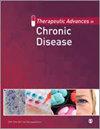Deep and unbiased proteomics, pathway enrichment analysis, and protein–protein interaction of biomarker signatures in migraine
IF 2.8
3区 医学
Q2 PHARMACOLOGY & PHARMACY
引用次数: 0
Abstract
Background:Currently, there are no biomarkers for migraine.Objectives:We aimed to identify proteomic biomarker signatures for diagnosing, subclassifying, and predicting treatment response in migraine.Design:This is a cross-sectional and longitudinal study of untargeted serum and cerebrospinal fluid (CSF) proteomics in episodic migraine (EM; n = 26), chronic migraine (CM; n = 26), and healthy controls (HC; n = 26).Methods:We developed classification models for biomarker identification and natural clusters through unsupervised classification using agglomerative hierarchical clustering (AHC). Pathway analysis of differentially expressed proteins was performed.Results:Of 405 CSF proteins, the top five proteins that discriminated between migraine patients and HC were angiotensinogen, cell adhesion molecule 3, immunoglobulin heavy variable (IGHV) V-III region JON, insulin-like growth factor binding protein 6 (IGFBP-6), and IGFBP-7. The top-performing classifier demonstrated 100% sensitivity and 75% specificity in differentiating the two groups. Of 229 serum proteins, the top five proteins in classifying patients with migraine were immunoglobulin heavy variable 3-74 (IGHV 3-74), proteoglycan 4, immunoglobulin kappa variable 3D-15, zinc finger protein (ZFP)-814, and mediator of RNA polymerase II transcription subunit 12. The best-performing classifier exhibited 94% sensitivity and 92% specificity. AHC separated EM, CM, and HC into distinct clusters with 90% success. Migraine patients exhibited increased ZFP-814 and calcium voltage-gated channel subunit alpha 1F (CACNA1F) levels, while IGHV 3-74 levels decreased in both cross-sectional and longitudinal serum analyses. ZFP-814 remained upregulated during the CM-to-EM reversion but was suppressed when CM persisted. CACNA1F was pronounced in CM persistence. Pathway analysis revealed immune, coagulation, glucose metabolism, erythrocyte oxygen and carbon dioxide exchange, and insulin-like growth factor regulation pathways.Conclusion:Our data-driven study provides evidence for identifying novel proteomic biomarker signatures to diagnose, subclassify, and predict treatment responses for migraine. The dysregulated biomolecules affect multiple pathways, leading to cortical spreading depression, trigeminal nociceptor sensitization, oxidative stress, blood–brain barrier disruption, immune response, and coagulation cascades.Trial registration:NCT03231241, ClincialTrials.gov.偏头痛生物标记特征的深度和无偏蛋白质组学、通路富集分析以及蛋白质-蛋白质相互作用
背景:目前,偏头痛还没有生物标志物。目的:我们旨在确定用于诊断、亚分类和预测偏头痛治疗反应的蛋白质组生物标志物特征。设计:这是一项针对发作性偏头痛(EM;n = 26)、慢性偏头痛(CM;n = 26)和健康对照组(HC;n = 26)的非靶向血清和脑脊液(CSF)蛋白质组学的横断面和纵向研究。结果:在405个CSF蛋白中,区分偏头痛患者和HC的前五位蛋白是血管紧张素原、细胞粘附分子3、免疫球蛋白重变异(IGHV)V-III区JON、胰岛素样生长因子结合蛋白6(IGFBP-6)和IGFBP-7。表现最好的分类器在区分两组患者方面的灵敏度为 100%,特异度为 75%。在229种血清蛋白中,能对偏头痛患者进行分类的前五种蛋白是免疫球蛋白重变异蛋白3-74(IGHV 3-74)、蛋白聚糖4、免疫球蛋白卡帕变异蛋白3D-15、锌指蛋白(ZFP)-814和RNA聚合酶II转录亚基介导因子12。表现最好的分类器显示出 94% 的灵敏度和 92% 的特异性。AHC将EM、CM和HC分为不同的群组,成功率为90%。在横向和纵向血清分析中,偏头痛患者的ZFP-814和钙电压门控通道亚基α1F(CACNA1F)水平升高,而IGHV 3-74水平下降。ZFP-814在CM到EM的逆转过程中保持上调,但在CM持续存在时受到抑制。CACNA1F在CM持续存在时明显升高。通路分析显示了免疫、凝血、葡萄糖代谢、红细胞氧和二氧化碳交换以及胰岛素样生长因子调节通路。失调的生物大分子会影响多种通路,导致皮质扩散抑制、三叉神经痛觉感受器敏感化、氧化应激、血脑屏障破坏、免疫反应和凝血级联。
本文章由计算机程序翻译,如有差异,请以英文原文为准。
求助全文
约1分钟内获得全文
求助全文
来源期刊

Therapeutic Advances in Chronic Disease
Medicine-Medicine (miscellaneous)
CiteScore
6.20
自引率
0.00%
发文量
108
审稿时长
12 weeks
期刊介绍:
Therapeutic Advances in Chronic Disease publishes the highest quality peer-reviewed research, reviews and scholarly comment in the drug treatment of all chronic diseases. The journal has a strong clinical and pharmacological focus and is aimed at clinicians and researchers involved in the medical treatment of chronic disease, providing a forum in print and online for publishing the highest quality articles in this area.
 求助内容:
求助内容: 应助结果提醒方式:
应助结果提醒方式:


